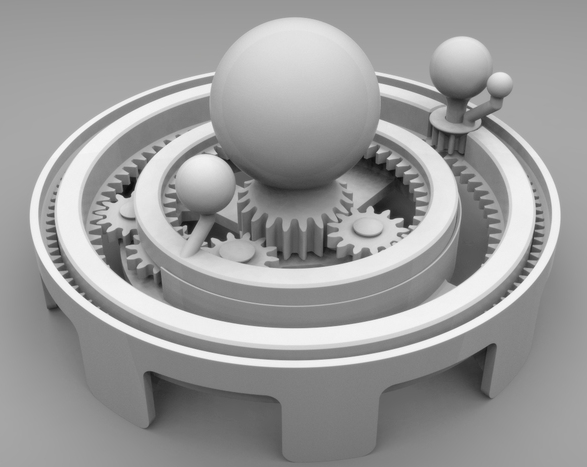 Boy, have times changed. I remember my days in grade school, learning about our solar system, our planets and the rest of outer space. In order to do so, we turned through countless pages of our boring textbooks, in what seemed like a never-ending endeavor to learn about places in space where we will probably never actually go. Now, through the use of technology, there are new, exciting ways of teaching kids about everything from the Milky Way Galaxy to 3D printing and other STEM topics. I only wish I was a child growing up in today’s times, as I can only imagine how much more interesting school would probably be.
Boy, have times changed. I remember my days in grade school, learning about our solar system, our planets and the rest of outer space. In order to do so, we turned through countless pages of our boring textbooks, in what seemed like a never-ending endeavor to learn about places in space where we will probably never actually go. Now, through the use of technology, there are new, exciting ways of teaching kids about everything from the Milky Way Galaxy to 3D printing and other STEM topics. I only wish I was a child growing up in today’s times, as I can only imagine how much more interesting school would probably be.
For one 68-year-old FAA Air-Frame design and repair specialist, named Joel Leathers, 3D printing is a technology that has really piqued his interest lately. In fact, Leathers is the owner of 8 desktop 3D printers, including a FlashForge printer, a FormLabs Form 1+, (3) iBox SLA printers, and (3) Delta style machines.
“Some might ask what I do,” Leathers says to 3DPrint.com. “Well most of the time when I am not doing work for the FAA, I scour engineering drawings or take my Vernier and convert things to STL files to post [on Thingiverse].”
 Recently, Leathers read a post by someone in a Thingiverse Group who was looking to find a 3D printable model of an Orrery that he could use to teach children about gear ratios, and outer space. (Where was this teacher when I was in school?)
Recently, Leathers read a post by someone in a Thingiverse Group who was looking to find a 3D printable model of an Orrery that he could use to teach children about gear ratios, and outer space. (Where was this teacher when I was in school?)
For those of you unfamiliar with what an Orrery is, it is a working mechanical model of our solar system, providing us with a look into how the rotations of the planets interact with each other. It is also a tremendous method of teaching those interested in engineering about how gear ratios work.
Leathers, who works with Solidworks and MOI on a daily basis, set out to create a working Orrery that would demonstrate the movement of the Earth and Moon in one year’s time, circling around the Sun, along with planet Venus. Once he had finished designing all of the files needed, he then spent approximately 4 hours printing out the 10 individual parts.
In additional to the 3D printed parts, the Orrery also requires the use of a motor, in order to automatically turn the gears and make the solar system spin. As you can see in the video below, Leathers’ design actually turned out amazingly well.
The design files for this Orrery can be downloaded for free from Thingiverse, where Leathers also has uploaded some of his other clever creations. What do you think about the potential a 3D printable device like this could present to the classroom? Not only could this be used to help children learn about our solar system, in place of the books we are all familiar with, but it is also a great way to help kids learn about gears and gear ratios. Discuss in the 3D Printed Orrery forum thread on 3DPB.com. Check out the video of Leathers’ Orrery below.
Subscribe to Our Email Newsletter
Stay up-to-date on all the latest news from the 3D printing industry and receive information and offers from third party vendors.
You May Also Like
Nylon 3D Printed Parts Made More Functional with Coatings & Colors
Parts 3D printed from polyamide (PA, Nylon) 12 using powder bed fusion (PBF) are a mainstay in the additive manufacturing (AM) industry. While post-finishing processes have improved the porosity of...
3DPOD Episode 193: Flow and What’s Possible in 3D Printing with Ricky Wildman, University of Nottingham
Ricky Wildman is working on 3D printing pills, but, as Professor of Multiphase Flow and Physics at Nottingham, he does a whole lot more. His research encompasses the characterization of...
3D Printing Webinar and Event Roundup: March 17, 2024
It’s another busy week of webinars and events, including SALMED 2024 and AM Forum in Berlin. Stratasys continues its in-person training and is offering two webinars, ASTM is holding a...
3D Printed Micro Antenna is 15% Smaller and 6X Lighter
Horizon Microtechnologies has achieved success in creating a high-frequency D-Band horn antenna through micro 3D printing. However, this achievement did not rely solely on 3D printing; it involved a combination...






























